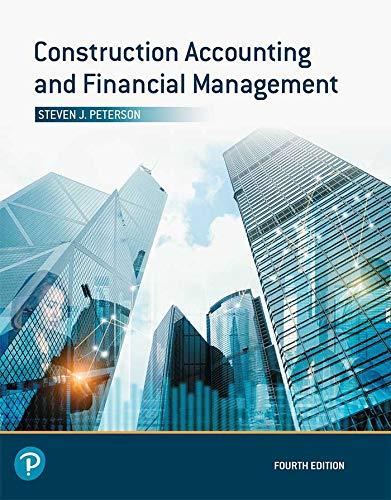Your company needs to purchase an impact attenuator vehicle to protect crews and equipment during road striping,
Question:
Your company needs to purchase an impact attenuator vehicle to protect crews and equipment during road striping, crack sealing, and other roadwork operations. The impact attenuator vehicle is expected to be used 700 hours per year protecting mobile operations (i.e., operations where the vehicle is constantly moving) and 1,500 hours per year protecting stationary operations (i.e., operations where the vehicle is parked). A basic impact attenuator vehicle cost $60,000 and it requires an operator while working on mobile operations. The dealer offers an automation package for the impact attenuator vehicle for $85,000 that allows the vehicle to follow a striping machine or a crack-sealing crew without requiring an operator to be in the vehicle. You estimate that the automation package will eliminate the need for an operator for about half of the time the vehicle is used on mobile operations.
A vehicle operator is paid $35.00 per hour, works an average of 40 hours per week, and gets three weeks off during the year in the form of vacation, holidays, and sick leave. Labor burden includes the following:
● Social Security: 6.2% on the first $128,700 in wages
● Medicare: 1.45% on all wages
● FUTA: 0.6% on the first $7,000 in wages
● SUTA: 2% on the first $15,500 in wages
● Workers’ compensation insurance: $8.95 per $100 in wages
● General liability insurance: 0.70%
● 401(k): The company matches 50% on up to 6% of the employee’s wages
● Health insurance: $550 per month
The operations costs for either option are expected to be the same. The annual maintenance cost is expected to be 3% of the purchase price. Maintenance and labor costs are expected to increase 2% per year. Using a study period of 10 years and an MARR of 15%, develop a spreadsheet that determines the incremental net present value, payback period with interest, and a graph of the project balance. The spreadsheet should allow you to change the labor input parameters, inflation rate, maintenance costs, initial cost of automation, labor hour savings, and MARR. Hint: Revenues and costs that are the same for both options can be ignored. Use the spreadsheet from Problem 8-7 as a starting point for this spreadsheet.
Step by Step Answer:

Construction Accounting And Financial Management
ISBN: 9780135232873
4th Edition
Authors: Steven J. Peterson




